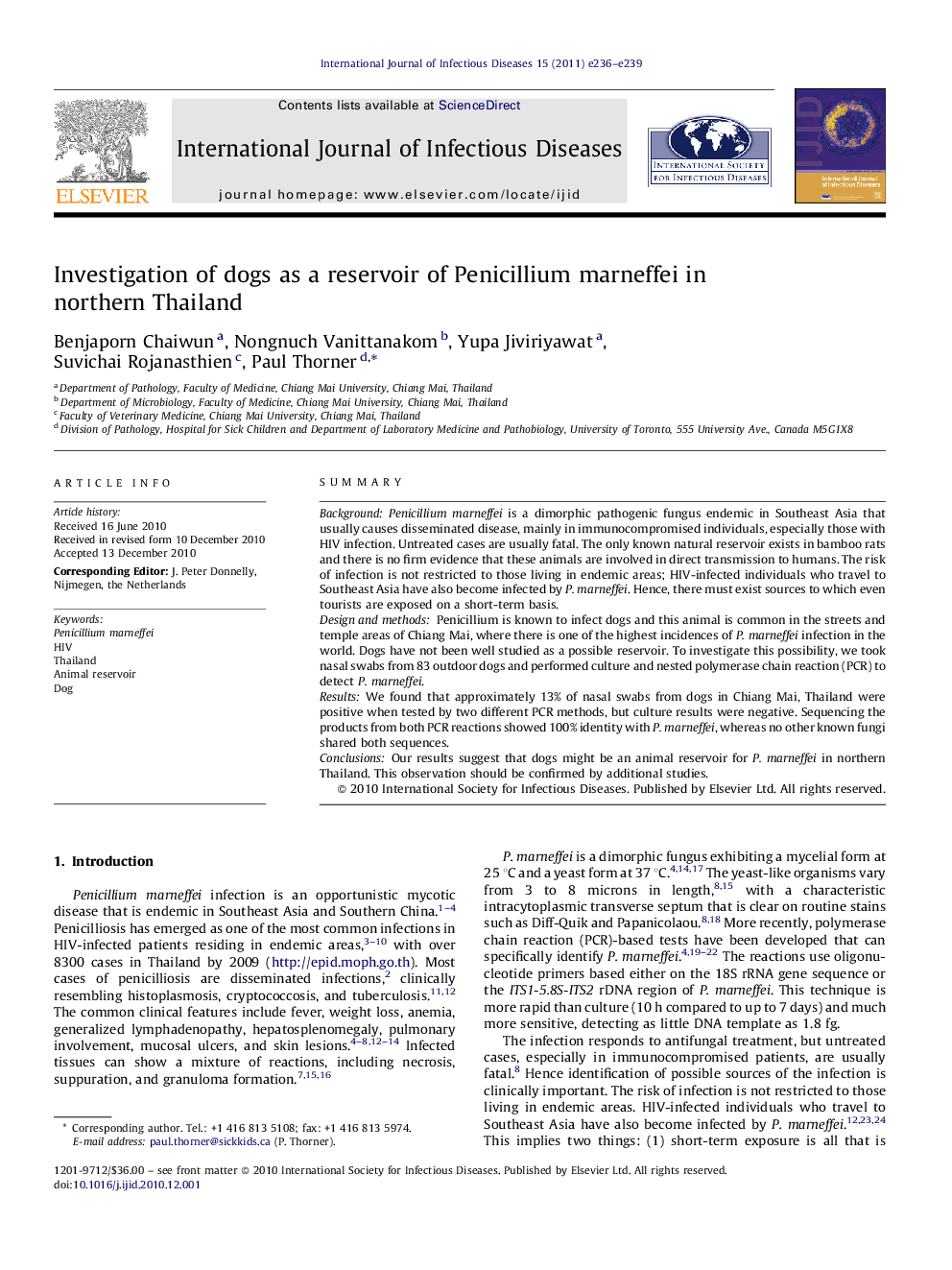| Article ID | Journal | Published Year | Pages | File Type |
|---|---|---|---|---|
| 3363639 | International Journal of Infectious Diseases | 2011 | 4 Pages |
SummaryBackgroundPenicillium marneffei is a dimorphic pathogenic fungus endemic in Southeast Asia that usually causes disseminated disease, mainly in immunocompromised individuals, especially those with HIV infection. Untreated cases are usually fatal. The only known natural reservoir exists in bamboo rats and there is no firm evidence that these animals are involved in direct transmission to humans. The risk of infection is not restricted to those living in endemic areas; HIV-infected individuals who travel to Southeast Asia have also become infected by P. marneffei. Hence, there must exist sources to which even tourists are exposed on a short-term basis.Design and methodsPenicillium is known to infect dogs and this animal is common in the streets and temple areas of Chiang Mai, where there is one of the highest incidences of P. marneffei infection in the world. Dogs have not been well studied as a possible reservoir. To investigate this possibility, we took nasal swabs from 83 outdoor dogs and performed culture and nested polymerase chain reaction (PCR) to detect P. marneffei.ResultsWe found that approximately 13% of nasal swabs from dogs in Chiang Mai, Thailand were positive when tested by two different PCR methods, but culture results were negative. Sequencing the products from both PCR reactions showed 100% identity with P. marneffei, whereas no other known fungi shared both sequences.ConclusionsOur results suggest that dogs might be an animal reservoir for P. marneffei in northern Thailand. This observation should be confirmed by additional studies.
